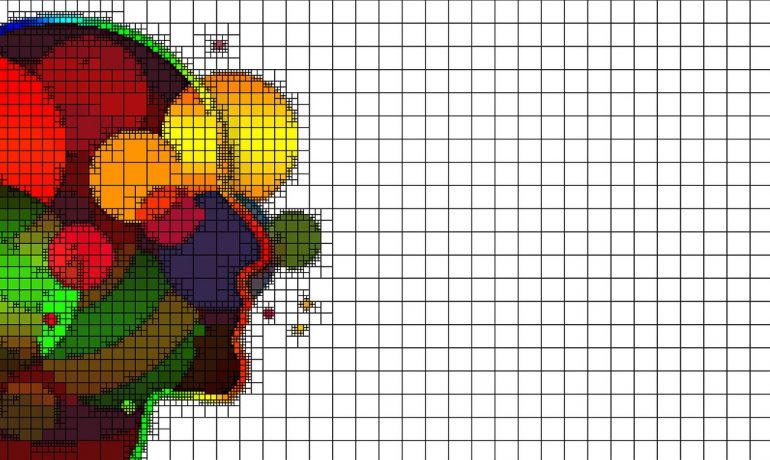It may well be that de-carbonising the power networks and electrifying transport are not sufficient to keep global temperature rise below the “safe” level of 2°C. So some are turning to more radical ideas, such as geo-hacking, and alternative foods.
Geo-hacking (or, less dramatically, geo-engineering) involves interfering directly in our climate systems, to disrupt the effects of increased CO2. One such approach is Solar Radiation Management (SRM) that aims at reducing the temperature of the atmosphere by blocking part of the solar energy that reaches the Earth by injecting particles, such as volcanic ash.
A similar project, sponsored by Harvard University, involves the release of calcium carbonate particles from a steerable balloon some 20 kilometres above the southwestern United States. The team hopes to release small plumes of about 100 grams of calcium carbonate into the upper atmosphere and then study how the particles disperse. The scientists will also watch for changes in atmospheric chemistry and how light scatters.
A different approach is to use the albedo effect – reflecting the sun’s rays. Spraying trillions of tons of snow over west Antarctica could halt the ice sheet’s collapse. Another proposal is to spray seawater into the air to help form clouds that reflect sunlight and cool the planet. Or perhaps we could fertilise oceans with iron to speed up the growth of phytoplankton and thus take up CO2, some of which would sink into the deep ocean as carbon when the organisms die.
The UN set up a group (GESAMP) to look into options for marine geo-engineering. These included:
- Iron fertilisation across 10 per cent of the Earth’s oceans by utilising every merchant ship in the world
- Adding lime to 10 per cent of the oceans to enhance alkalinity, increase CO2 uptake and counter seawater acidity
- Drawing up cool, nutrient-rich water from the depths with large pipes to create an artificial upwelling that provokes algal blooms while also cooling the ocean’s surface
- Injecting liquefied CO2 into the seabed in depressions and trenches where it can be stored for 1,000 years
- Increasing the ocean’s reflectivity by drawing up cold water to increase Arctic ice thickness, or by adding foams, micro-bubbles or reflective particles to the surface
- Brightening marine clouds by spraying fine seawater into low lying stratocumulus clouds to increase their reflectivity and reduce surface temperatures
- Farming seaweed on a large scale before entombing it deep in the ocean to sequester its carbon, or process it for biofuels.
You’ve probably already started wonder whether such approaches make sense, or worse could have major unintended consequences. GESAMP recognised that there is a dearth of hard information on geo-engineering, and intend to commission research into the implications.
A second approach is to change the food we eat to reduce eco-effects, in particular replacing rainforests with pasture for animals. 26% of global GHG emissions come from food, 58% of which is from meat, 29% just from beef and lamb. An IPCC report describes plant-based diets as a major opportunity for mitigating and adapting to climate change ― and includes a policy recommendation to reduce meat consumption.
Not everyone agrees. The NFU argue there is no need to reduce beef consumption, instead they suggest we can offset three-quarters of the UK’s agricultural emissions by growing fuel for power stations and then capturing and burying the carbon dioxide. The IPCC had concerns about bio-energy on the grounds that it competed too directly with the population’s food requirements.
Alternative foods are also being proposed. Insects produce less greenhouse gases and require less feed and water; they have more protein per 100g than meat, and more iron.
A report from Barclays suggested that this could become big business – sushi was once regarded as “yuck” in the West, insects could overcome that hurdle too. Ocado are already selling bags of roasted crickets. A firm called Bug Farm Foodshas developed VEXo, a protein from insects that can be used like minced meat, and has even opened an insect restaurant – Grub Kitchen.
Alternatively we could grow meat in a laboratory or factory. By 2012, 30 laboratories from around the world had announced that they are working on cultured meat research, and there was a live demonstration of an artificial burger in 2013. A start-up company called Future Meat Technologies recently raised $14m to build a production facility. There have even been tests carried out at the International Space Station that led to the production of beef, rabbit and fish tissue using a 3D printer. Barclays estimate that “alternative meat” could take 10% of the global meat market in 10 years.
And of course as well as helping reduce carbon emissions, such approaches address the ethical issues around meat consumption.
All of the above issues raise a wide range of social, technological, economic and political factors, which we regularly encounter through our foresight work.
Written by Huw Williams, SAMI Principal
The views expressed are those of the author(s) and not necessarily of SAMI Consulting.
SAMI Consulting was founded in 1989 by Shell and St Andrews University. They have undertaken scenario planning projects for a wide range of UK and international organisations. Their core skill is providing the link between futures research and strategy.
If you enjoyed this blog from SAMI Consulting, the home of scenario planning, please sign up for our monthly newsletter at newreader@samiconsulting.co.uk and/or browse our website at http://www.samiconsulting.co.uk
Image by Gerd Altmann from Pixabay


